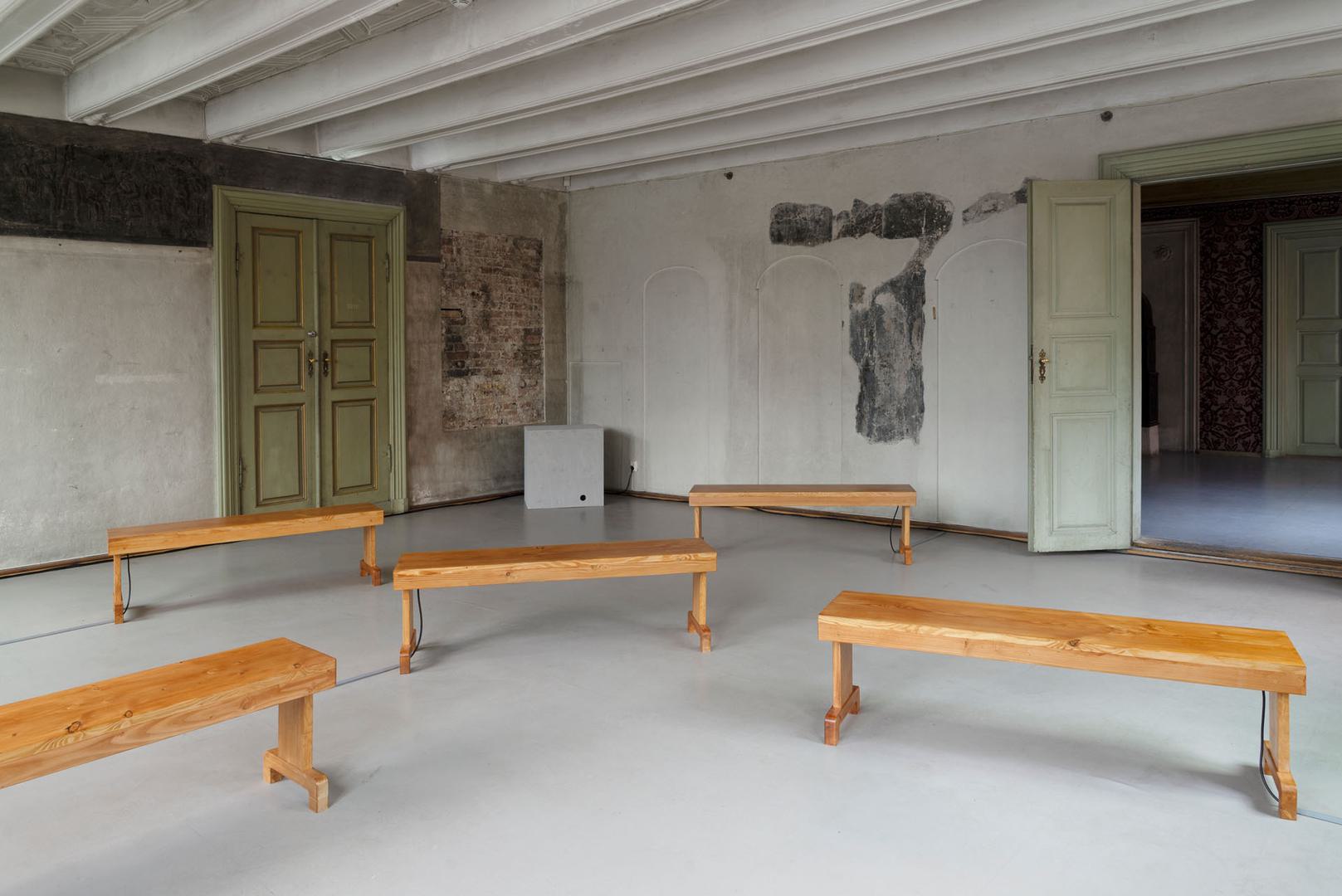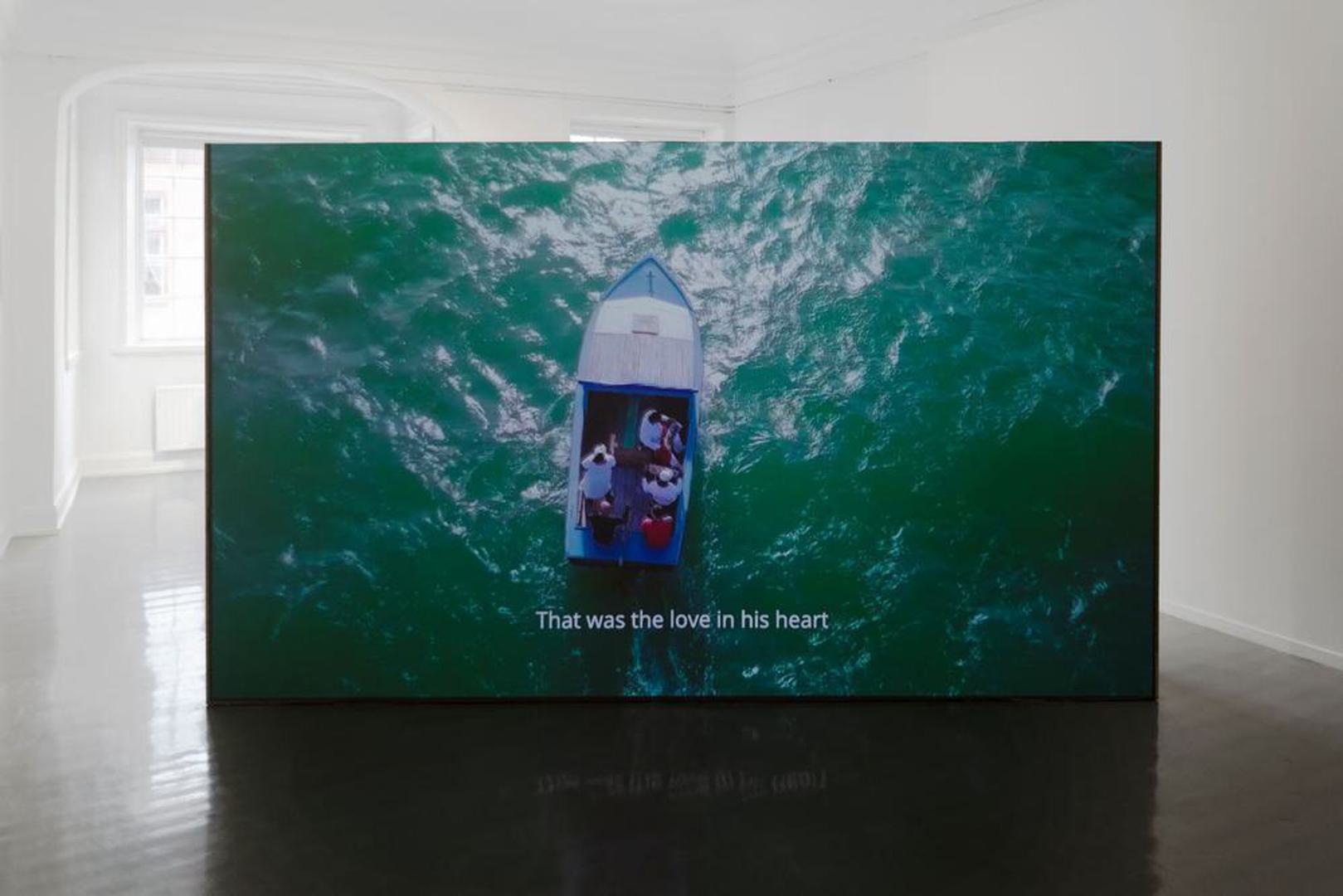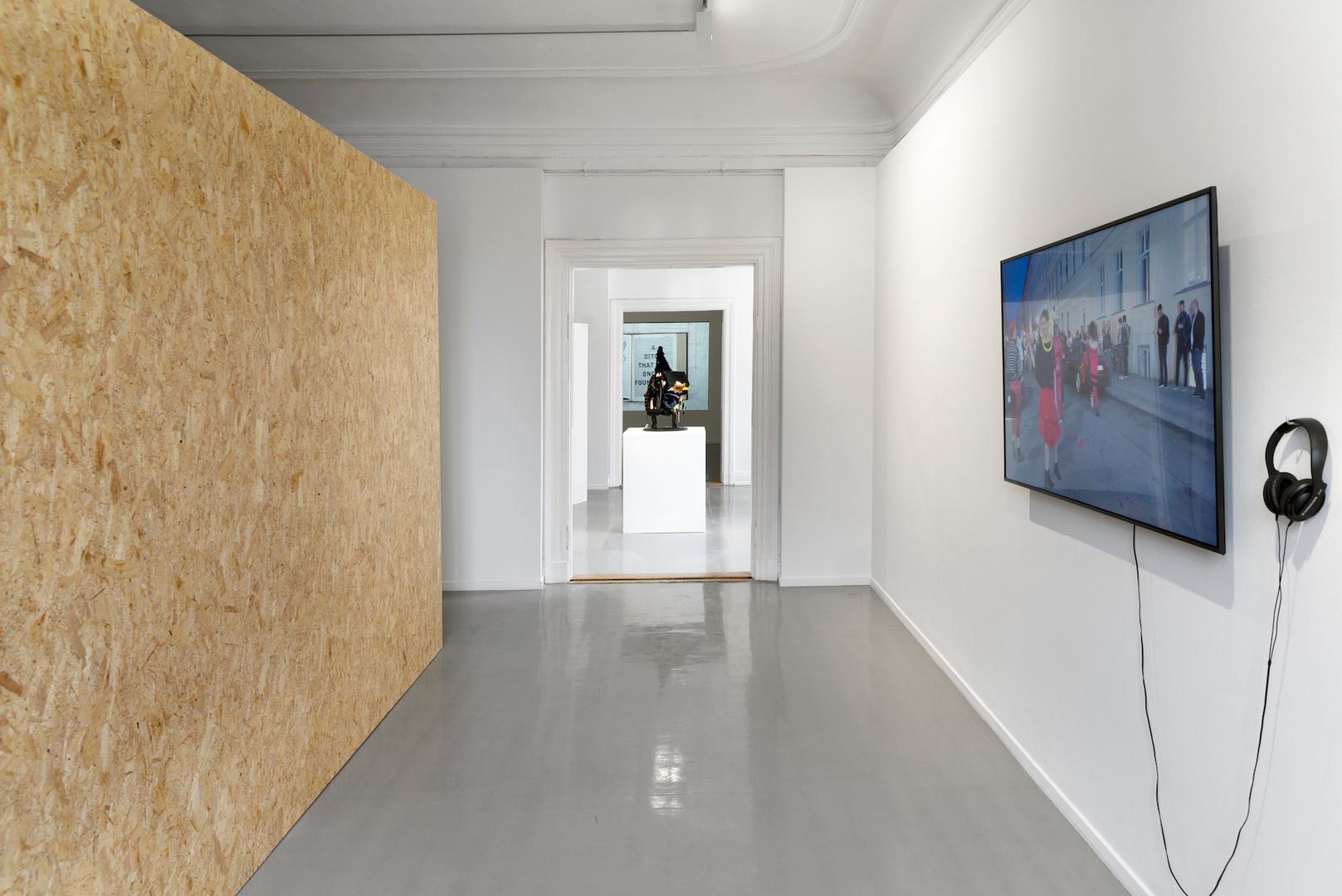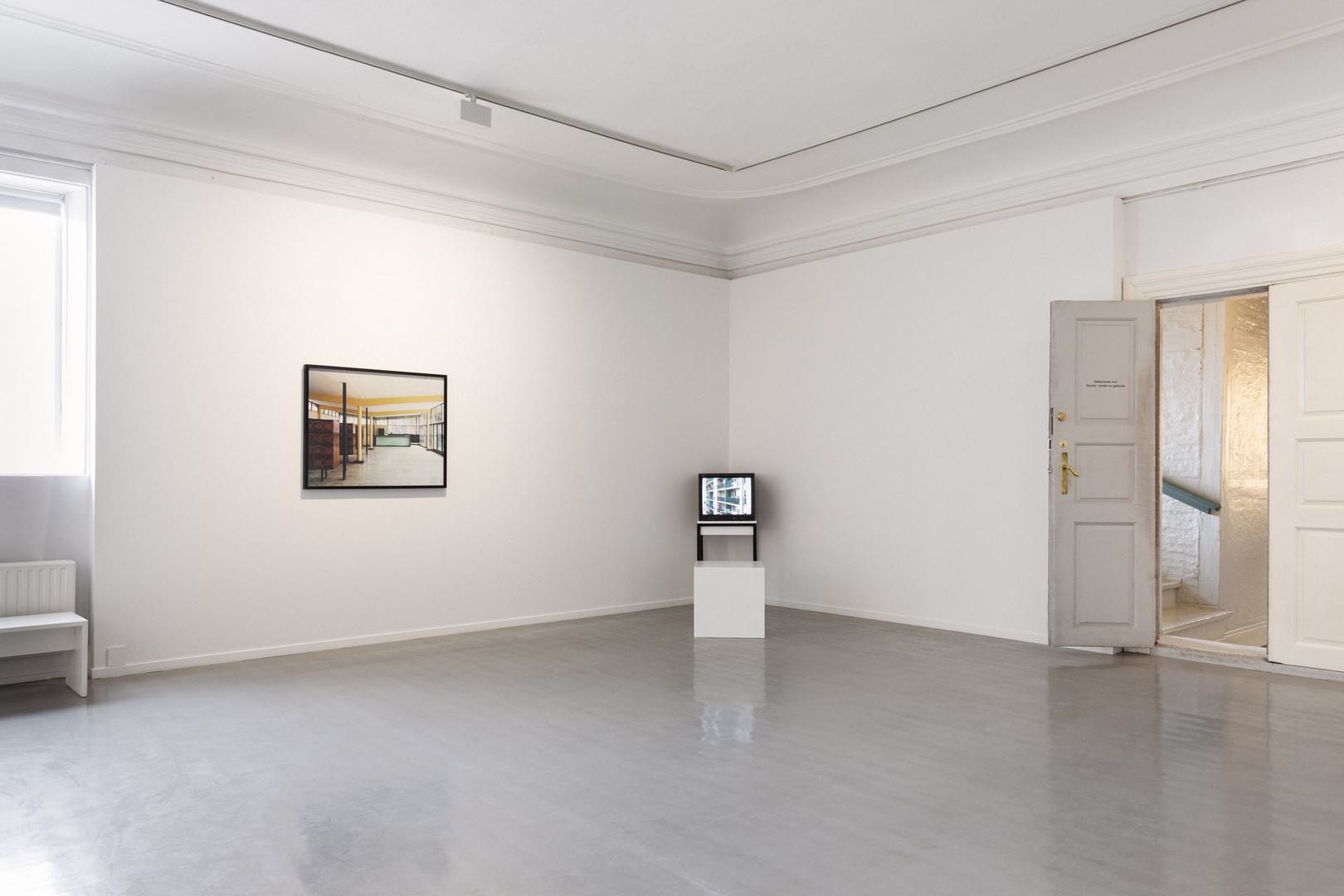Listening to Echoes of the South Atlantic

Listening to Echoes of the South Atlantic
Listening to the Echoes of the South Atlantic is an interdisciplinary exhibition that features the work of Cássio Bomfim, Jeannette Ehlers, Anita Ekman, Satch Hoyt, William Kentridge & Neo Muyanga, Camille Norment, Dawit L. Petros, and Nyugen E. Smith. The exhibition includes a combination of videos, sound- based sculptures, installations, and performances that convey the importance of sonic politics in relation to the entangled histories of the South Atlantic.
Listening to the Echoes of the South Atlantic explores the political, social, and cultural implications of music in contemporary art. The deep interconnectivity between music and history is the underlying narrative of the exhibition. Building on the importance of music in relation to what Paul Gilroy refers to as “the Atlantic as a system of cultural exchanges”, the exhibition addresses the significance of music as a collective language of resistance and solidarity.
The exhibition highlights interdisciplinary approaches that reflect a deep understanding of music and its overlapping histories. As the exhibition conveys, music and sound are particularly effective means of bringing history into contemporary space. The sonic heartbeat of the exhibition is found in socially engaged and historically conscious art practices that extend beyond the strict parameters of visual art, music, or performance.
We are invited to experience what Satch Hoyt describes as a journey from slave ship to spaceship. Highlights along the way include the Tupi-Valongo Cemetery, where Pankararu indigenous chants are interspersed with the sounds of gunshots from a favela; the Danish Marienborg, with its strong connection to the triangular trade, where Jeannette Ehlers performs a Vodou dance, and a haptic sound installation by Camille Norment that explores sonic interconnectivity conveyed through a soundscape that ranges from Tibetan monk chants to African American church hymns.
African American musical traditions are at the center of most discourses about musical migrations within the Black Atlantic, and rightfully so. Shifting the focus ever so slightly, this exhibition places particular emphasis on the social, political, and cultural links between African, Latin American, and Caribbean musical traditions. As such, the exhibition is shaped into a comprehensive narrative that spans hundreds of years, transcending history, belief systems, and cultures.
Curated by Selene Wendt, the exhibition was conceived in response to her participation in the three-year interdisciplinary research project Echoes of the South Atlantic, initiated by Goethe-Institut, (2018-2020). The first stage of the project took place in Salvador da Bahia, Brazil in 2018, followed by Berlin in 2019, and will conclude in Dakar in May.

Listening to Echoes of the South Atlantic
About the curator
Selene Wendt was educated as an Art Historian at The University of Chicago. She works as an independent curator and writer. She founded The Global Art Project in 2013 as a platform for her work to promote contemporary art across geographic borders, with particular focus on artists from Latin America, the Caribbean, and Africa.
She has extensive experience curating international exhibitions, each with accompanying publications, including Shirin Neshat Beyond Orientalism; Ghada Amer Reading Between the Threads; Liza Lou Leaves of Glass; and Maria Magdalena Campos-Pons Mil Maneras Para Decir Adios, to name a few. Important thematic exhibitions include Art Through the Eye of the Needle (Henie Onstad, 1999), A Doll’s House (Henie Onstad, 2002), Postcards from Cuba: A Selection from the 8th Havana Biennial (Henie Onstad, 2004), Island Revolution: The History of Jamaican Music from Ska to Reggae (a special collaboration with the Experience Music Project, Seattle for Henie Onstad, 2004), Equatorial Rhythms (The Stenersen Museum, 2006), Beauty and Pleasure in South African Contemporary Art (co- curated with Khwezi Gule, The Stenersen Museum, 2009), The Storytellers: Narratives in International Contemporary Art (curated in collaboration with Gerardo Mosquera, The Stenersen Museum, 2012, and El Museo de Arte del Banco de la Republica, Bogota, Colombia, 2013), Mind the Map (Punkt Ø, Galleri F 15, Jeløya, Norway, 2014), Jamaican Routes (Punkt Ø, Galleri F 15, Jeløya, Norway, 2016), The Art of Storytelling (Niteroi Contemporary Art Museum, Rio de Janeiro, Brazil, 2016), Orhan Pamuk: The Art of Fiction (The Museum of Cultural History, Oslo, Norway, 2017), A Sheet of Paper Can Become a Knife (The Prince Claus Fund Gallery, Amsterdam, The Netherlands, 2018-2019), and The Sea is History (The Museum of Cultural History, Oslo 2019). Selene Wendt is an invited participant in the three-year interdisciplinary research project initiated by Goethe-Institut Sao Paulo (2018-2020), which addresses the past, present and future of South Atlantic relations. She is currently writing a book about ‘Entangled Colonial Histories in Contemporary Art’. Forthcoming exhibitions in 2020 include Listening to the Echoes of the South Atlantic, to take place at Oslo Kunstforening February 6- April 5, 2020, and Iké Udé: Nollywood Portraits, to open in September at the Smithsonian Museum of African Art in Washington, DC.
Wendt writes regularly for international publications and art journals such as NKA Journal of Contemporary African Art, Duke University Press.

Listening to Echoes of the South Atlantic
Cássio Bomfim
The artist Cássio Bomfim devises a fictional cosmology by exploring the nuances and similarities between the codes, rituals, and archetypes of the Brazilian religion Umbanda. In the colonial era, the kingdoms of Portugal and Spain forbid all religious practices deviating from the Catholic Church. It was in this context that religious syncretism developed, which involved translating spiritual rituals, gods, and ritualistic acts of indigenous and African origin into Catholic codes, so as to ensure their continued existence. This phenomenon shaped the convoluted relations between Catholic saints and the Orishas, the Yoruban gods, and other African cosmological beliefs. Each Orisha became associated with a saint, or even several saints. The Exu, on the other hand, are messengers in the Candomblé religious tradition, who are called on to mediate between the material and immaterial worlds, establishing communication between the two sides. In Umbanda, the Exu plays a pivotal role on streets, at cemeteries, and in road crossings. Throughout his work Cássio Bomfim also integrates references to the Motoboy figure, the contemporary protagonist of transport and communication in Brazil, basically an Exu in a new form. Bomfims work includes a series of photos, videos, live narratives, and a fashion collection, typically presented on the streets, and accompanied by religious and contemporary funk carioca music.
Jeannette Ehlers
Jeannette Ehlers is a Caribbean diaspora visual artist born and based in Denmark. Ehlers studied at The Royal Danish Academy of Fine Arts in Denmark in 2006. Through digitally manipulated photographs and videos, she engages with coloniality, decoloniality, blackness and black identity, among them Denmark’s role as a slave nation - part of Danish cultural heritage, which often gets overlooked in the general historiography. For years, she has created cinematic universes that delve into ethnicity and identity inspired by her own Danish/West Indian background and challenges the film medium's ability to communicate in a visually fascinating and engaging language. She has exhibited her work internationally, for instance in Denmark, Germany, Korea, The Netherlands, The United Kingdom and The United States.
Ehlers grapples with the history of Denmark’s involvement in colonialism and slavery, and their afterlife in the present. Until recently, this violent chapter of national history has received only scant attention in Danish public discourses. She recently gained international recognition for her public sculpture I Am Queen Mary, commemorating the resistance against Danish colonial rule, co-created by Ehlers and La Vaughn Belle. The sculpture is situated at Larsens plass in Copenhagen, and was recently designated as a permanent monument.
Anita Ekman
Anita Ekman is a visual and performance artist, illustrator and researcher of Amerindian and Afro-Brazilian arts. As a specialist in Indigenous art, she worked on the formation of the collection Great Masters of Popular Art in Ibero-America(Banamex Cultural Fund). She organised, illustrated and edited a collection of books about the Indigenous history of the Americas for the publisher Hedra (Indigenous World Collection) and AJS (Citizen of Educational Books Collection).
As an artist and curator she presented the Women of Samba – 100 Years of Samba Exhibition in Magnet Gallery (Australia). Currently she is developing the project DescolonizARTE and carries out workshops and performances using Pre-Columbian ceramic body stamps, presenting these workshops in Australia, Argentina (Ethnographic Museum of Buenos Aires) and Brazil (UNESP). She is the director of the video artwork ‘Tupi Valongo Cemetery of the New Blacks and Old Indians’ about the African diaspora in Rio de Janeiro and Ochre – In body of Art, about Rock Art in Serra da Capivara (Piaui, Brasil).
Satch Hoyt
Satch Hoyt, born in London of British and African-Jamaican ancestry, currently lives and works in Berlin, Germany. He makes sculptures and installations accompanied with sound, as well as paintings and drawings. His work reflects on the shared experiences of the African Diaspora. Hoyt’s sculptures addresses’ the facts of black experience, while his drawings tap into a spirit of fantasy, refuge, and transcendence - they are vehicles for an imaginative journey beyond the obduracy and oppressiveness of history.
With regards to his musical accomplishments Satch Hoyt has composed a number of songs with Grace Jones; noteworthy, is 7 Day Weekend which is on the triple platinum soundtrack album of the Eddie Murphy movie Boomerang. Hoyt also worked with master percussionist composer Stomu Yamashta, played flute on Louise Bourgeois’ OTTE, and is flautist - percussionist in Burt Sugar The Arkestra Chamber since 2001.
William Kentridge
Born in 1955 in Johannesburg, William Kentridge attended the University of the Witwatersrand in Johannesburg from 1973 to 1976 and the Johannesburg Art Foundation from 1976 to 1978. Kentridge originally trained in painting and drawing, but he also studied mime and theater at the L’École Internationale de Théâtre Jacques Lecoq in Paris from 1981 to 1982. When he returned to South Africa in 1985, he worked as a props assistant on a television series. In 1985 he made his first animated film, Vetkoek/Fete Galante. He developed a method of filmmaking that he dubbed “poor-man’s animation,” in which he photographed charcoal drawings and collages as he gradually adjusted them, as in the early films Johannesburg, 2nd Greatest City After Paris (1989) and Monument (1990).
Kentridge has exhibited widely since 1981. He has had solo exhibitions at the Museum of Modern Art in New York (1999), Hirshhorn Museum and Sculpture Garden in Washington, D.C. (2001), New Museum of Contemporary Art in New York (2001), Centre Georges Pompidou in Paris (2002), Castello di Rivoli in Italy (2004), Metropolitan Museum of Art in New York (2004), Deutche Guggenheim in Berlin (2005), Museum of Modern Art in New York (2006), Moderna Museet in Stockholm (2007), and Philadelphia Museum of Art (2008), among other venues. A major survey of Kentridge’s work was organized by the San Francisco Museum of Modern Art in 2008 and traveled to the Norton Museum of Art (2008) and the Museum of Modern Art, New York (2010). He has also participated in many group exhibitions, including the Venice Biennale (1993 and 2005), Istanbul Biennial (1995), Sydney Biennial (1996), Documenta, Kassel, Germany (1997 and 2002), São Paulo Biennial (1998), Carnegie International, Pittsburgh (1999), Shanghai Biennial (2000), and Auckland Triennial (2004). In addition, he has appeared in many international film festivals, among them the New Zealand Film Festival and the Internationales Trickfilm Festival Stuttgart (both 2000). He has received many awards for his work, including the Blue Ribbon Award at the American Film Festival in New York (1985), the Carnegie Prize at the Carnegie International (2000), the Sharjah Biennial Prize (2003), and the Kaiserring prize from the Mönchehaus-Museum für Moderne Kunst in Goslar, Germany (2003). Kentridge was also short-listed for the Hugo Boss Prize in 1998. He lives and works in Johannesburg.
Neo Muyanga
Neo Muyanga is a composer, musician and librettist. Born in Soweto, he studied madrigal singing in Trieste, Italy. In 1996 he co-founded (with Masauko Chipembere) the acoustic pop duo, Blk Sonshine, and in 2008, co-founded (with Ntone Edjabe) the Pan African Space Station, a platform that hosts cutting-edge Pan African music and sound art on the internet. His recorded albums include: Blk Sonshine (1999), the Listening Room (2003), Fire, Famine Plague and Earthquake (2007), Good Life (2009), Dipalo (2011), Toro tse Sekete (2015) and Second-hand reading (2016). His other published works include the music plays, Memory of how it feels (2010), the Flower of Shembe (2012) and the opera, Heart of Redness (2015). An alumnus of the Berliner Künstlerprogramm des DAAD (2016), he was also Composer-in-residence of the Johannesburg International Mozart Festival (2017) and the National Arts Festival of South Africa (2017). He tours widely both as a solo performer, bandleader, choir conductor. Neo Muyanga is a research affiliate at the University of Cape Town’s Drama School and the Centre for African Studies.
Camille Norment
Camille Norment was born in Silver Spring, USA. She lives and works in Oslo. Norment’s recent performances have taken place at the Pushkin State Museum of Fine Arts, Moscow, 2017; Montréal Biennial, 2016; The Armory Show, NY, 2016; Lisboa Soa Festival, 2016 and Ultima Contemporary Music Festival, Oslo, 2015. Previous solo exhibitions have taken place at Lydgalleriet, Bergen, 2016; September Gallery, Berlin, 2009 and the Round Gallery, Atlanta Contemporary Art Center, 2007. She has participated in a number of group exhibitions in Norway and internationally, amongst others at the Kochi-Muziris Biennale in Kerala, India, 2016; Montréal Biennial, 2016; Marso Gallery, Mexico City, 2016; the National Museum of Art, Architecture and Design in Oslo, 2014 and 2012; the Museum of Modern Art, NY, 2013; Luleå Konsthal, 2013; Stenersenmuseet, Oslo, 2010 and Henie Onstad Kunstsenter, Oslo, 2009. In 2017 Norment presented a solo exhibition at Oslo Kunstforening, Temple Bar Gallery, Dublin and participated in the group show «Soundtracks» at SFMOMA as well as the Lyon Biennial in France. In 2015 Camille Norment represented Norway at the Nordic pavilion at the 56th edition of La Biennale di Venezia, and in 2016 she participated in the Murzi Kochi Biennial.
Dawit L. Petros
Dawit L. Petros is a visual artist born in Eritrea and based in New York City. Working with installation, photography, research and extensive travels, his practice centers on a critical rereading of the relationship between African histories and European modernism. In recent projects, he has employed abstraction as an act of translation to push against naturalized ways of understanding form, color and subjectivity. By drawing upon forms rooted in diverse histories, Petros' artistic language enables a metaphorically rich articulation of the fluidity of contemporary transnational experiences and attendant issues of displacement, place-making and cultural negotiation.
Recent exhibitions include: The 13th Havana Biennial: Intermittent Rivers, Matanzas, Cuba (2019), Royal Ontario Museum, Toronto (2018), Bamako Biennale (2017), New Orleans Museum of Art, New Orleans (2017), Walther Collection Project Space, New York (2016); Huis Marseille, Amsterdam, Netherlands (2016); Kansas City Art Institute (2016); 56th Venice Biennale international exhibition (2015), Tiwani Contemporary, London (2016) the Studio Museum in Harlem, NY (2014), the Museum of Fine Arts, Boston (2014), the National Museum of African Art, Washington, DC (2013), and the Lianzhou International Photo Festival, China (2011). He was awarded an Independent Study Fellowship at the Whitney Museum of American Art in 2012. His work was also presented in Recent Histories: Contemporary African Photography and Video Art at The Walther Collection, Neu-Ulm, Germany.
Nyugen E. Smith
Nyugen E. Smith is a first generation Caribbean-American interdisciplinary artist and educator living and working in Jersey City, NJ. Responding to the legacy of European colonial rule in the African diaspora, his work considers imperialist practices of oppression, violence, and intergenerational trauma. He is interested in ritual and sacred practice rooted in African spiritual systems and how they are employed as coping mechanisms and tools for collective empowerment. He holds a BA from Seton Hall University and an MFA from The School of the Art Institute of Chicago. He has conducted public programs, visiting artist lectures, and panel discussions at institutions including the Schomburg Center for Research in Black Culture, New York; The Studio Museum in Harlem, New York; Massachusetts College of Art and Design, Boston, MA. Awards: 2016 Leonore Annenberg Performing and Visual Arts Fund, 2018 Franklin Furnace Fund, 2018 Joan Mitchell Foundation Painters and Sculptors Grant. Most recent exhibitions include The Sea is History; Relational Undercurrents: Contemporary Art of the Caribbean Archipelago, and The Other Side of Now: Foresight in Contemporary Caribbean Art, currently on view at the Perez Art Museum, Miami.

Listening to Echoes of the South Atlantic
Performance program
In connection with the opening, Nyugen E. Smith did a performance.
A series of live performances will take place at Nordic Black Theatre, Oslo throughout the exhibition period. The events are free of charge.
13.02.2020, 8 pm, at Nordic Black Theatre
Performance: Cássio Bomfim - Salve Exu Motoboy
CANCELLED: 27.03.2020, 8 pm, at Nordic Black Theatre
Concert and visuals: Neo Muyanga & William Kentridge
CANCELLED: 04.04.2020, 8 pm, at Nordic Black Theatre
Performance: Satch Hoyt - Hair Combing Cycle 1530
A series of focus talks will be organized at Goethe-Institut Oslo, on March 27.
The exhibition is produced in collaboration Oslo Kunstforening, Goethe-Institut and Nordic Black Theatre. With additional support from Fritt Ord.


